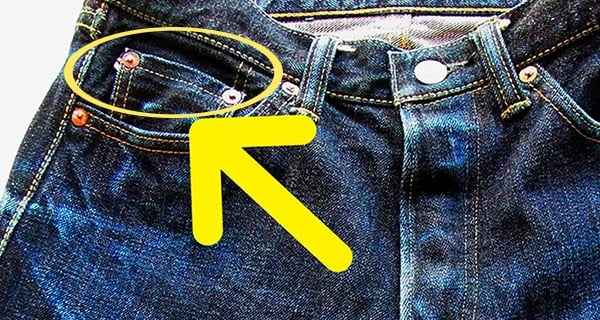Jeans come in all shapes, sizes, and colors, but if you take a closer look, you’ll notice something almost all of them have in common: a tiny pocket tucked inside one of the front pockets. It’s often too small to fit anything useful—so what is it doing there?

A Timeless Fashion Staple with Hidden Details
Jeans are one of the most universal fashion items—worn by people of all ages and social backgrounds. Their popularity stems from their versatility, durability, and timeless appeal. With a simple yet flattering design, jeans can be dressed up or down for almost any occasion.
But beyond their obvious qualities, jeans also hide some interesting design features that many people overlook. One of the most curious? That tiny pocket.
What’s the Purpose of the Tiny Pocket on Jeans?
It might seem logical to assume the pocket is meant for loose change, a ticket stub, or maybe a mint. And while it can be used for those things, its original purpose is far more specific and rooted in history.
According to Levi’s—the company credited with inventing jeans—the small pocket was originally designed in the late 19th century as a “watch pocket” or “fob pocket.” Back then, pocket watches were the norm, especially among workers and cowboys, and needed a secure place for storage. In 1873, Levi Strauss introduced this small pocket as part of the classic five-pocket jean design, specifically to hold a pocket watch.
As wristwatches eventually became mainstream, the pocket watch faded into history—but the little pocket stayed. Today, it serves more as a nostalgic feature or stylistic detail, though many people use it to carry small items like coins, keys, or simply to add a touch of flair to their outfit.

Another Detail You Might Have Missed: The Jacron Patch
Aside from the small pocket, there’s another classic feature on jeans that often raises questions: the leather or faux leather patch on the waistband.
This patch, called a Jacron, typically features the brand’s logo. Levi’s pioneered this design element in 1873, sewing a leather label onto the back waistband to identify their products and distinguish them from imitations. It quickly became a symbol of authenticity and quality.
Today, the Jacron patch is a staple across many denim brands—not just Levi’s. In fact, in 2018, American Eagle even launched an AE Studio in New York where customers could design their own custom Jacron labels, turning a branding feature into a fashion statement.
How to Use the Tiny Pocket Without Ruining Your Look
Now that you know the origin of the tiny pocket, here are a few tips for making the most of it without compromising your outfit’s aesthetic:
- Use it for small, flat items like coins, mints, or a small key.
- Avoid stuffing it with bulky objects that could stretch or distort the pocket and make it look awkward.
- For a personal touch, consider customizing it—some people embroider it or add rhinestones to make it stand out.
What started as a functional feature for cowboys and miners is now a subtle nod to the heritage of denim fashion. The tiny pocket on jeans may not serve the same purpose today, but it remains a charming detail with a story to tell—just one of the many reasons jeans have stood the test of time.

